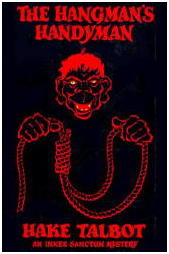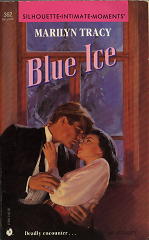Wed 5 Nov 2008
Reviewed by Kevin Killian: HAKE TALBOT – The Hangman’s Handyman.
Posted by Steve under Authors , Characters , Reviews1 Comment

HAKE TALBOT – The Hangman’s Handyman. Simon & Schuster, hardcover, 1942. Pulp magazine reprint: Two Complete Detective Books #24, January 1944. Trade paperback: Ramble House, 2005.
Some peculiarities of construction prevent Hake Talbot’s first novel from attaining the first rank, but it remains an engaging curiosity with plenty of atmosphere. A few years down the pike, he would write Rim of the Pit, one of the great detective novels of the twentieth century, and while this is far from that, it has its moments.
Rogan Kincaid makes a memorable entrance, dripping in oilskins, on the morning after an orgiastic dinner at The Kraken, the baronial stone mansion on its own island off the Carolina coast. Only Rogan could have braved the storm, Rogan Kincaid, the man’s man, dangerous gambler whose exploits around the world are legend in the underworld.

But he’s not all bad, he’s sensitive and loves to give women a good time. As showgirl Nancy Garwood struggles to tell him what happened the night before, bits and shards of memory return to her until, with a scream, she recalls a repressed memory, that their host, Jackson Frant, the owner of The Kraken, had been cursed by his half brother Lord Tethryn of England, according to the old family curse, and he had instantly died.
Laid up in his bed, he now awaits the police. When Rogan goes to see Frant, he can barely make out the features of his old friend: a seemingly supernatural power connected to the family curse (“”Od rot you!””) has caused decay to happen at super-fast rates — the body seems as if it has been dead for weeks instead of mere hours!

Talbot drapes layers and layers of medieval and early American horror/folktale material on the bones of his fragile story. You can tell he really loved his research. As Rim of the Pit depends on the native American legend of the Windigo, The Hangman’s Handyman just drips and squelches with Undine trivia. You will believe that a heap of seaweed can stand up of its own volition, move across the room towards you, and strangle you to death!
Much of the action of the book turns into an “origin story” explaining the true and romantic background of the hardened gambler who calls himself Rogan Kincaid. This part of the story: unbelievable to the point of being ridiculous, and I notice that Talbot discarded Kincaid’s aristocratic origins by the time he embarked on the superior work of Rim of the Pit, but Talbot completists won’t mind a little icing on their cake.

















